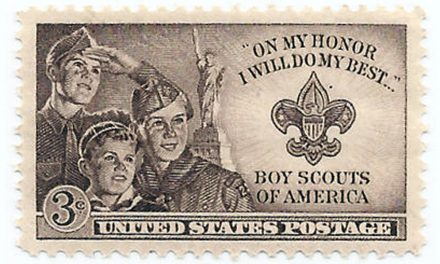If someone of a certain political persuasion looks hard enough, it seems like almost every well-known individual in history was a closeted gay man or woman. From Abraham Lincoln to James Buchanan to Grover Cleveland’s sister, there is apparently an epidemic of homosexuality throughout history, but only if you look hard enough. In reality the number of closeted gays is mostly driven by the desire of men and women eager to establish a historical precedent for the 21st century gay identity.
It is true that throughout history there have been men and women who have participated in homosexuality in one form or another. The Ancient Greeks and Romans had a cultural history of romantic relationships between older men and teenage boys, though the physical extent of those relationships is somewhat questioned. There is also Phillipe I, Duke of Orleans, brother of Louis XIV, who’s physical and romantic relationships with other men were well established and openly discussed in French court. He also dressed up in women’s clothing from time to time.
But overall there are few instances where true gay identified relationships, as thought of today, actually existed. Even Phillipe had two wives, and through his descendants he is often considered the grandfather of Catholic royalty. That reality though hasn’t stopped LGBT activists and supporters for turning nearly any historical figure into a gay icon.
Earlier this week, one Democratic presidential candidate stated his belief that statistically, the United States has probably already had a gay president. Of course, he can’t identify any president that would fit the bill, but there have been a couple suggestions.
One well known president that has been posited as a “gay man” is Abraham Lincoln. He is perhaps one of the greatest presidents this country has ever had, but the evidence that he was gay identified is sketchy at best. According to a psychologist, influential gay writer, former sex researcher C.A. Tripp, the evidence for Lincoln’s homosexuality was his “troubled marriage to Mary Todd Lincoln” and that he shared a bed with men on two separate occasions in his life.
To some 21st century ears, that could be compelling, but to Lincoln’s contemporaries that might’ve sounded rather normal. It was a common practice in the 19th century for travelers and boarders to share beds because privacy was often a non-existent luxury. The so-called “troubled marriage” to Mary Todd could be explained by Lincoln’s own possible struggles with depression. So, the author’s conclusion about Lincoln’s sexuality is really the result of bias as a gay man and likely a deliberate misinterpretation of the facts to fit his narrative. He was looking for a gay president and found one, but many historians quickly denounced his claims.
Another interesting claim is the recent announcement of the first gay First Lady, Rose Cleveland. She was the sister of President Grover Cleveland and served as interim First Lady for her bachelor brother. Rose apparently had a long-term relationship with another woman that lasted decades. The relationship is described in a new book as deep and passionate, but that may have been a bit of an exaggeration.
One of the issues with the “relationship” is that the foundations of it rely on only one set of letters between the two women. Language in those days was generally more passionate and intimate in many ways when it comes to same sex friendships. It’s doubtful that any modern-day friends would text about, as Rose described, their “long rapturous embraces (that) carry us both in one to the summit of joy, the end of search, the goal of love” (the only evidence of their physical relationship). Sure, it might sound sexual to a 21st century audience, but it might not have been at the time.
We also don’t know if Evangeline, the supposed object of Rose’s affections, responded to those letters with the same level of affection, but we do know one thing. Despite their supposed intimate, romantic relationship, Evangeline did decide at one point to marry another man (her first husband had died leaving her a sizable inheritance). As a woman of means and money, Evangeline had no need to marry but she did, which was deeply upsetting to Rose. He died about four years into their marriage. Rose and Evangeline did live out their last days together in Italy—but whether it was a romantic relationship or a deep, intimate friendship, we’ll likely never know for sure.
As the LGBT movement has grown in acceptance and popularity over the last decade or so, there has been a concerted effort to rewrite history to make it more “inclusive.” Activists often look to the smallest details or reinterpret history in order to portray a historical figure as gay identified in order to push their own agenda. But usually the evidence used is minimal at best, or more often just wishful thinking.






